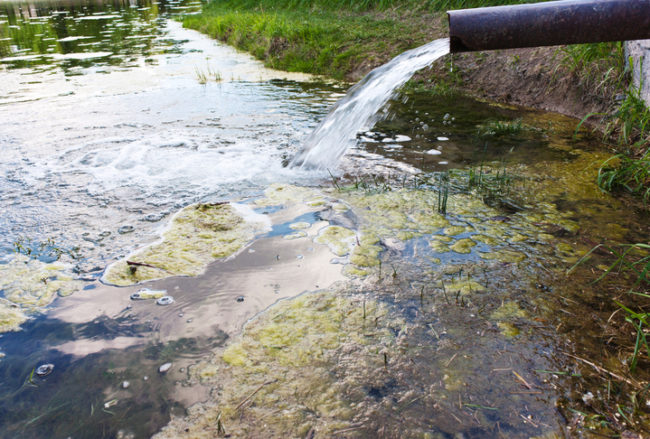Perfluorooctanoic Acid (PFOA), also known as C-8, is a synthetic man-made chemical that is both toxic and persistent in the environment. It has been used in the manufacture of commercial products like non-stick cookware, stain-resistant clothing and carpets, food wrappers, dental floss, electrical insulation, fabrics, firefighting foam, as well as many industrial products. PFOA has raised health concerns because long-term exposure has been linked to testicular, kidney, and thyroid cancer, as well as high cholesterol, and pregnancy-induced hypertension. Our readers familiar with PFOAs likely have heard about the controversy in Hoosick Falls, NY — a small village on the Vermont border in upstate New York. In November 2015, the EPA recommended that the people of Hoosick Falls not drink their local water based on the presence of PFOA above 400 ppt in the public drinking supply. And in January 2016, the NYS Department of Environmental Conservation added the Saint-Gobain Hoosick Falls site to the state’s Superfund list.
In February 2016, a well-known plaintiff’s law firm filed a federal lawsuit against two of Hoosick Falls most prominent businesses: Saint-Gobain Performance and Plastics and Honeywell. The lawsuit, in simple terms, alleges that those two companies are responsible for contaminating the municipal water supply, private wells, and the aquifer beneath the village with PFOA. The lawsuit seeks damages for property contaminations, remediation, and implementation of a medical, property, and water source-monitoring program. Just a month after the suit was filed, the NYS Department of Health announced that “repeated testing of the…municipal water system show[ed] non-detection of PFOA and is now safe for uses…” In September 2016, however, EPA recommended that the Saint-Gobain site be added to the Superfund National Priorities List.
On June 6, 2017, a new study conducted by the NYS Health Department found no statistical link between PFOAs and cancer in Hoosick Falls. In just a week’s time, the new study has immediately been touted and condemned by advocates on both sides. The study concluded that despite the village’s exposure to PFOA that may date back more than 40 years, the number of cancer cases reported in the village for a 20-year period of time (1995-2014) found only one instance where the village saw a statistically significant increase — lung cancer. For those well-versed in the science behind PFOA, it is understood that there has been little to no linkage between PFOA and lung cancer. The reported rates for kidney and testicular cancer — cancers that have shown a nexus — were actually lower than expected.
One limitation of the study critics charge is that it did not include the town of Hoosick, despite many individuals outside of the village being subjected to the water contamination. But state officials defended the reliability of the report because only a limited number of town residents were exposed through their water supply. Officials added that Health Department staff would not have been able to distinguish cancer registry numbers to determine if a cancer patient lived in the contaminated area of the town, and the limitation was further supported for purposes of ensuring consistency in exposure. Critics also complain that the investigative study did not account for residents diagnosed with cancer after moving away from the village. And although the rate of lung cancer was higher than expected, critics fail the study for not considering whether that increased incidence was due to diminished immune systems from PFOA exposure. Health Department officials though believe that the higher than normal cigarette smoking rate in Hoosick Falls was likely the cause of the higher than normal lung cancer rate. Other higher rates found for other cancers were not statistically significant. The agency expects to update these findings every three to five years.

